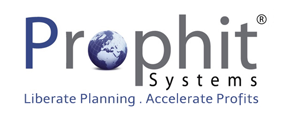SUPPLY CHAIN FORECASTING “PLAYBOOK”

It’s a common time to review how you are tracking to budget and how you see the next twelve months are panning out. Professional sports teams develop set plays that detail. When A happens we respond with B. These teams assembly all their set plays into “playbooks”. These playbooks are learned by all members of the team so that in a split second all players in the team can respond in a coordinated fashion, often with decisive outcomes.
Agile businesses are doing the same. They are using their planning processes to predict what might happen and prepare the set plays specific to their business.
Two recent examples of set plays we’ve been involved in:
1. A customer is running promotions of certain products without giving us the desired notice. They are responding to their competitors promotions. What can we do to support their un-forecast promotional activities?
2. If customer A is successful in acquiring customer B, they will expect improved pricing. How will we respond to their requests. What will be the full impact on our business?
Developing a playbook for the year ahead is not as hard as it seems. In practice this becomes a working document. The exciting outcome of this approach is it can drag your management team’s focus from what happened yesterday, to navigating and side stepping pending issues before they became a crisis.
Step 1.
If you take the time to confirm your best estimate sales forecast, zone in on those products and customers that are performing above forecast and those that are underperforming.
Identify the major risks and the opportunities around these forecasts.
Develop a high and a low range forecast based on a number of these risks and opportunities playing out.
Step 2.
Develop action plans to address the risks and seize the opportunities as they arise.
Step 3.
Phase the action plans according to Go – No Go criteria. These became your set plays.
Empower your staff with these set plays. If these conditions occur, invoke these actions. Then let me know you have done them.
Step 4.
Review monthly, see how your sales are tracking to forecast, review your best estimate, and see how it is tracking. Determine if your corrective actions / set plays are still current and still adequate.
Successful Supply Chain’s require simply but savvy forecasting methodologies with the right collective mind set.
